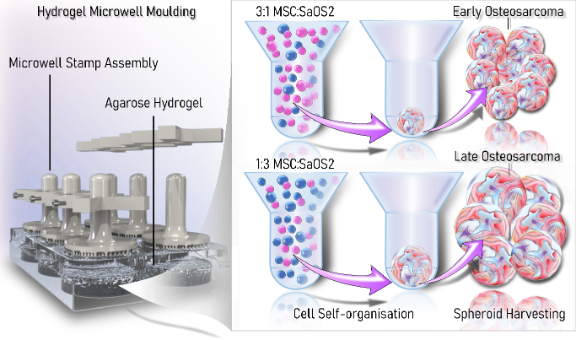3D Tumour Models

Develop and characterise Patient Derived Tumour Spheroids (PDTS) as a clinically relevant 3D cancer model of osteosarcoma
Previous studies have shown that cellular spheroids exhibit a more clinically relevant response (increased chemoresistance) to chemotherapeutics than conventional 2D cell cultures. Previously, we have developed the first co-culture spheroid model for osteosarcoma, adjusting the stromal to osteosarcoma cell ratio to simulate different cancer stages. This led to increased tumor growth and upregulation of key osteosarcoma prognostic genes. Despite its value, the model did not fully capture the primary cancer's heterogeneity.

Recently, patient-derived tumor spheroids (PDTS) have emerged as suitable models for testing patient-specific drug responses in various cancers, including colorectal, liver, melanoma, non-small cell lung, and head and neck cancers. However, no studies have yet generated PDTS from osteosarcoma biopsies as a potential 3D tumor model. This project aims to create PDTS from osteosarcoma, ensuring they replicate the histological features, cellular diversity, and gene expression profiles of the original tumors, and validate their use in examining osteosarcoma and screening potential therapeutics. This work is funded by Horizon Europe ERC Starting Grant.